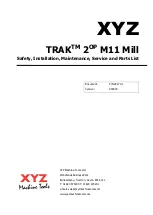
208
Figure 65 Two-to-two VLAN mapping implementation
General configuration restrictions and guidelines
When you configure VLAN mapping, follow these restrictions and guidelines:
•
When you configure one-to-two VLAN mapping on a QinQ-enabled port, the switch operates as
follows:
{
If a packet matches the one-to-two VLAN mapping, the switch tags the packet with the
SVLAN that is specified in the VLAN mapping.
{
If a packet does not match the one-to-two VLAN mapping, the switch tags the packet with
the PVID.
•
When you configure one-to-one or many-to-one VLAN mapping on a QinQ-enabled port, the
switch operates as follows:
{
If a packet matches the one-to-one or many-to-one VLAN mapping, the switch replaces the
CVLAN tag with the SVLAN tag specified in the VLAN mapping.
{
If a packet does not match the one-to-one or many-to-one VLAN mapping, the switch tags
the packet with the PVID.
For more information about QinQ, see "
•
You can configure both VLAN mapping and a QoS policy for VLAN tagging. The QoS policy
takes effect if a configuration conflict occurs. For information about QoS policies, see
ACL and
QoS Configuration Guide
.
VLAN mapping configuration task list
IMPORTANT:
Use the appropriate VLAN mapping methods for the devices in the network.
To configure VLAN mapping:
Tasks at a glance
Remarks
Configuring one-to-one VLAN mapping
Configure one-to-one VLAN mapping on the
wiring-closet switch, as shown in
Configuring many-to-one VLAN mapping
•
Configuring many-to-one VLAN mapping in a
network with dynamic IP address assignment
•
Configuring many-to-one VLAN mapping in a
network with static IP address assignment
Configure many-to-one VLAN mapping on the
campus switch, as shown in
.
Complete one of the tasks based on the IP address
assignment method.
Network-side port
Customer-side port
Uplink traffic
Downlink traffic
Customer
network
SP network
SVLAN
Data
CVLAN
SVLAN
Data
CVLAN
Two-to-two VLAN
mapping
Data
CVLAN’
SVLAN’
Data
CVLAN’
SVLAN’
















































